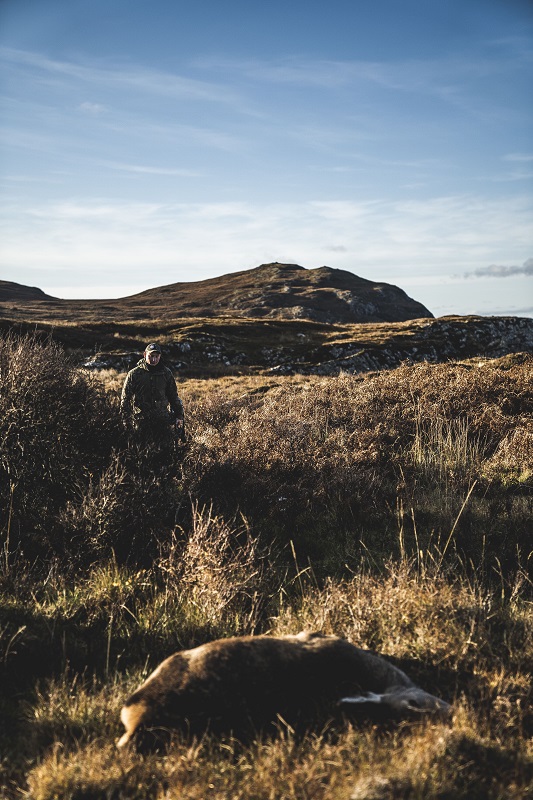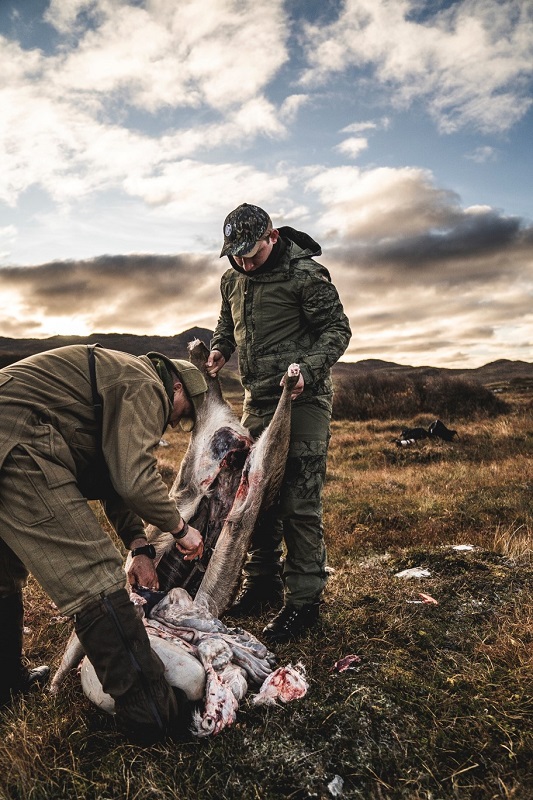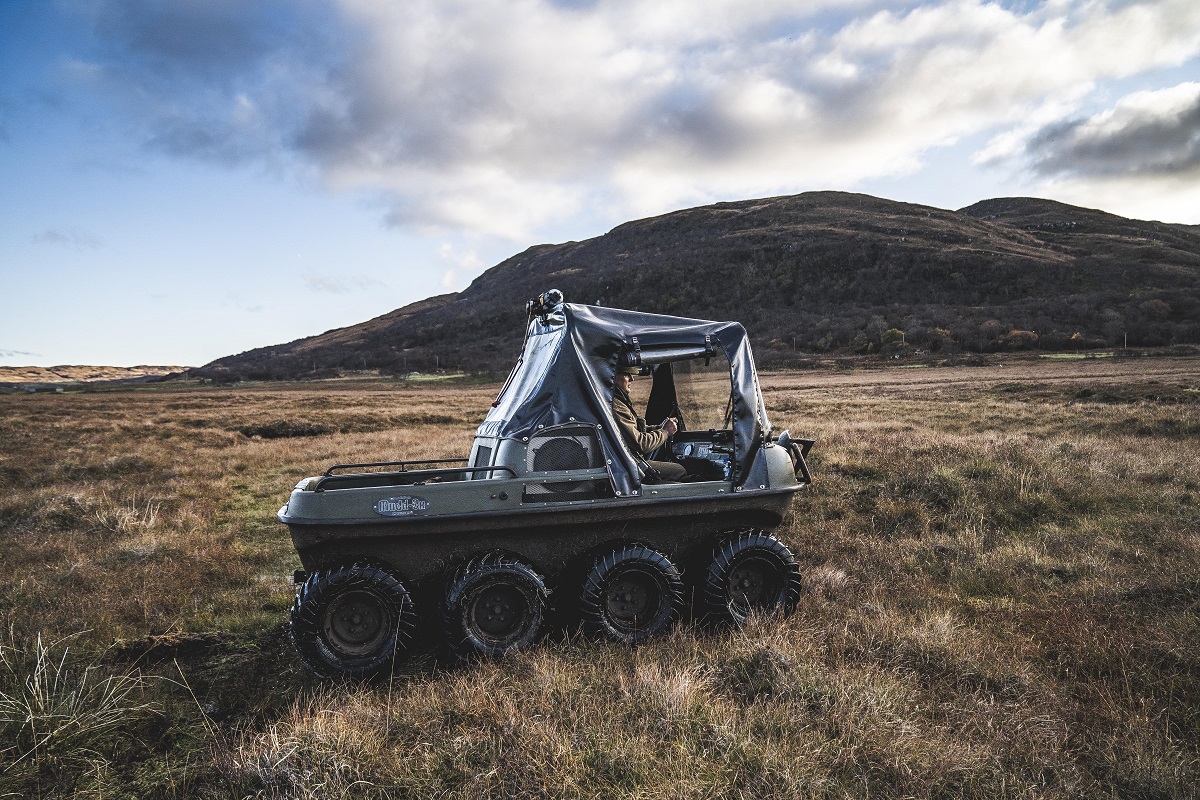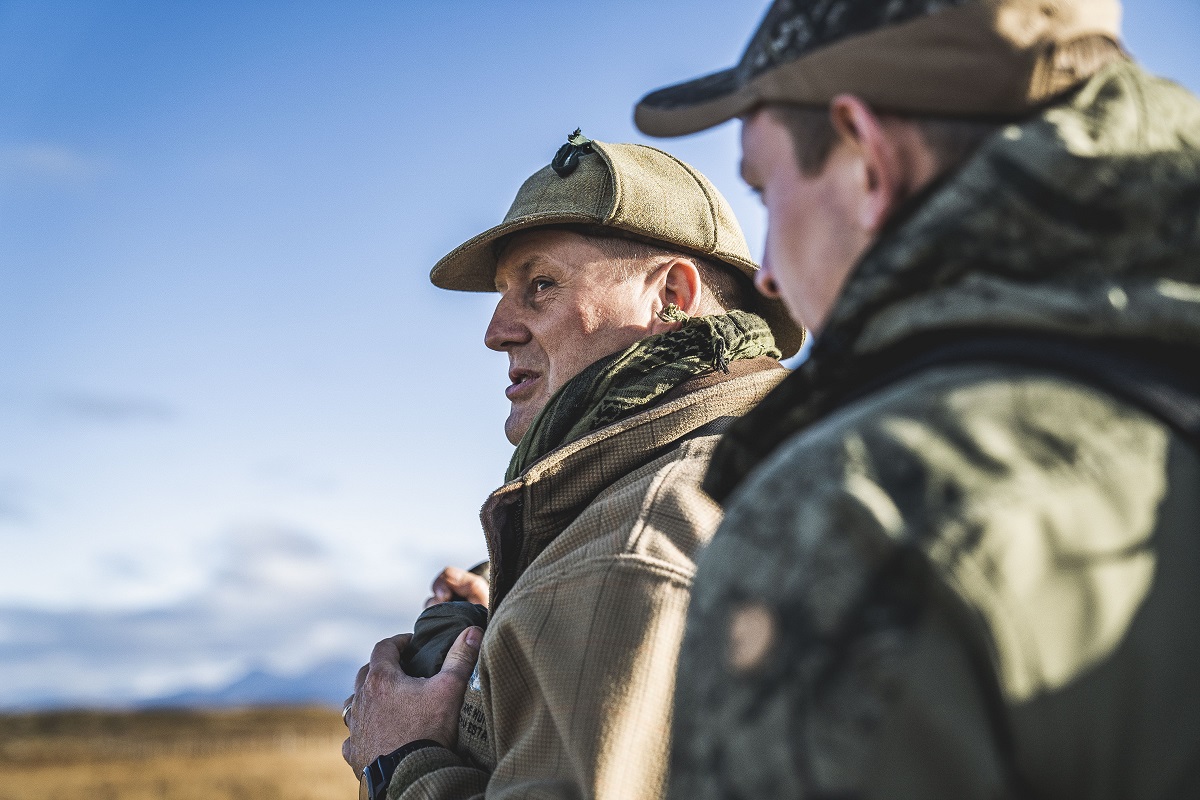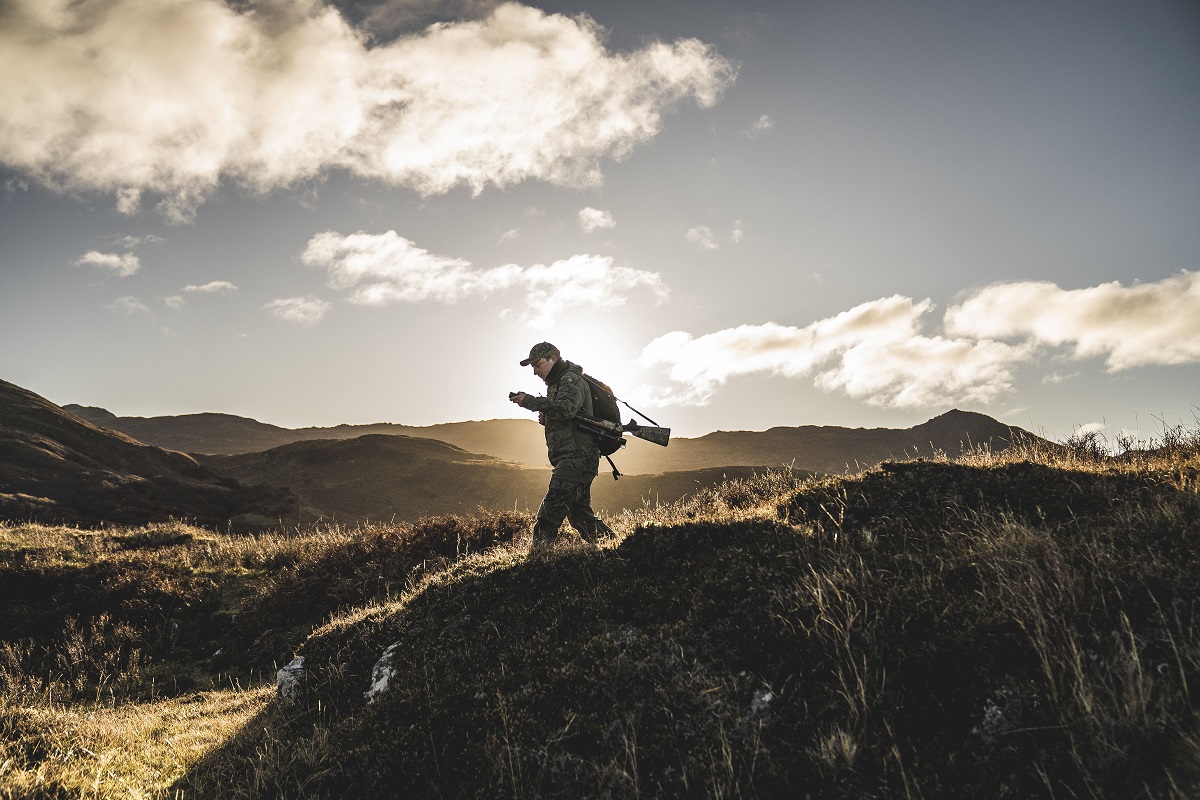Highlands & RWS EVOLUTION GREEN Short Rifle
In mid-November we, a small group of selected hunters from all over Europe, set off for the Scottish Highlands to hunt for doe. We had been picked as the first people to shoot, test and hunt with the new RWS EVOLUTION GREEN Short Rifle.
Our growing anticipation before the upcoming trip was accompanied by a healthy dose of respect thanks to a regular look at the weather forecast. Temperatures just over freezing point, as well as wind, rain and hail – the conditions sounded like a real challenge for hunters and equipment alike. We planned one day on the shooting range and three days of hunting on rough terrain. As you might expect, our baggage for this adventurous trip was extensive and heavy.
Glasgow greeted us with stormy, rainy weather as per the forecast. Following a four-hour drive along winding country roads, through mountain ranges and along rugged coastlines, we reached our destination. The Ardnamurchan Estate lies in the far west of Scotland on a thinly populated peninsular. The region offers visitors the type of panoramic landscape that springs to mind when one thinks of Scotland. From the coast, one’s gaze sweeps across slopes with sparse vegetation and seemingly endless ridges.
RWS EVOLUTION GREEN Short Rifle: first test with the new cartridges on the shooting range!
The next morning, Scotland revealed its more welcoming side, contrary to the weather forecast. The sky had cleared up, the wind had subsided and the sun sparkled above the mountain ridges to the East. Following a traditional Scottish breakfast, we set off to try out the estate’s very own shooting range.
This marked the première for a new RWS cartridge – the RWS EVOLUTION GREEN Short Rifle, calibre .308 Win. The redesigned bullet is now a little heavier at 9.0g. In the future it will also be used for the other cartridges in the .30 calibre group. The projectile is designed as a semi-jacketed bullet with a defined body. Both cores are made of tin. The front one is pre-fragmented to ensure effective impact.
However, what makes this cartridge special is the fact that it is built specifically for short barrels. The velocity measurement from the 52 cm barrel indicated an impressive 925 m/s, fully compensating the disadvantages that are otherwise associated with short barrels. Short barrels are usually picked, especially in connection with silencers, as the firearm is otherwise very unwieldy. However, in the open terrain of the Scottish Highlands shots often have to be made at distances of 200m or more. So it is reassuring to know that the cartridge offers sufficient performance reserves, despite the choice of an easy-to-handle weapon.
Now it was time to convince the hunting guide of our shooting skills. The range offered us the possibility of shooting from distances of 100m to 400m. We shot as we would in a hunting situation from a prone position, using a bipod. All the participants of the group were experienced hunters and trained marksmen, so there was nothing else standing between us and coming days of hunting.
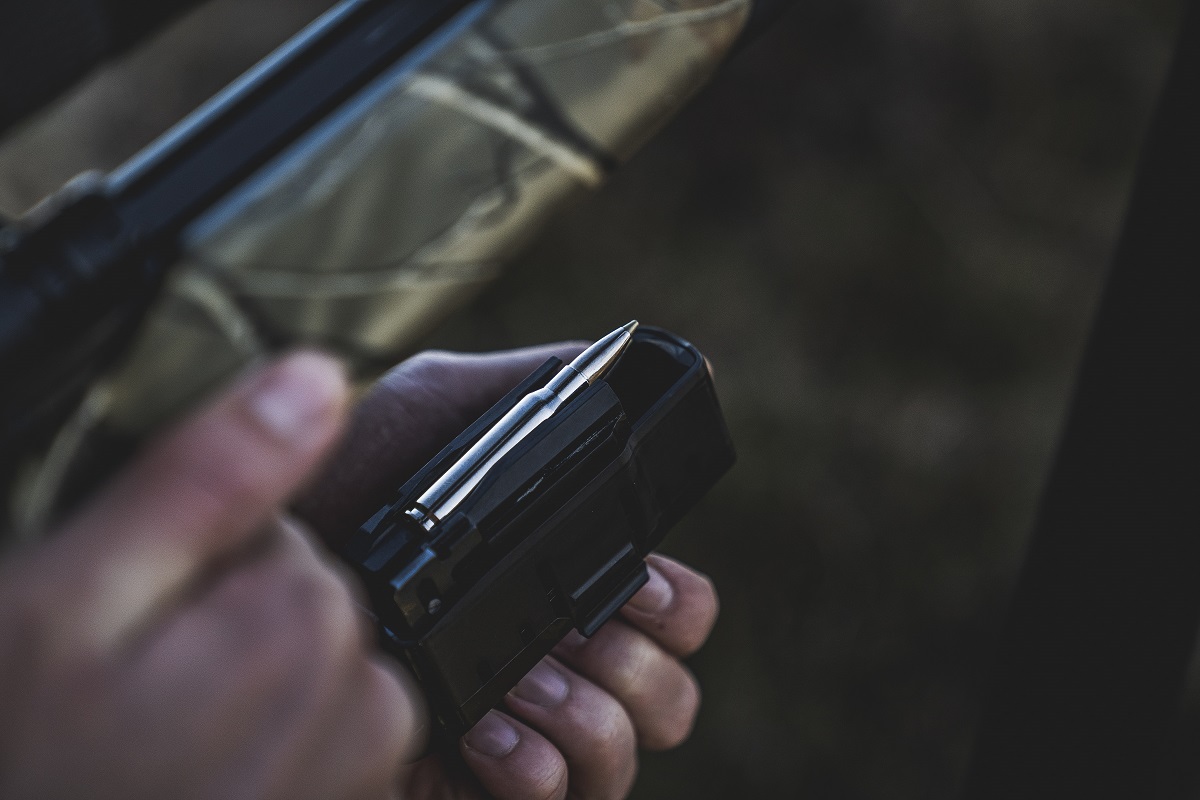
Three days of hunting in the Scottish Highlands with the RWS EVOLUTION GREEN Short Rifle
The weather gods were kind to us – over the next few days we didn’t see so much as a single drop of rain. Blue sky, sunshine and a light wind. That just doesn’t happen in Scotland in mid-November. We met in front of our accommodation to discuss the course of the hunt. November is close season for all red deer stags in Scotland. We therefore had our eye on the doe. But not indiscriminately – first and foremost we were interested in old, weak adults and the accompanying calves. The decision as to which animal should be taken down was up to the experienced professional hunters. One day of hunting was enough to show us why things are done like that here.
We were assigned to our guides in groups of two hunters and were then ready to get started! We first travelled in the SUV to the different parts of the huge hunting ground. On the first day of the hunt we proceeded along the coast with Niall. It’s not every day you get to hunt on the “beach”. Although the terrain is very open with sparse vegetation, the landscape provides ideal cover for the game, which can barely be distinguished from the environment, particularly from a prone position. It was usually Niall with his trained eye who was first to spot the prey, while we had difficulty making out the small herds on the slopes.
Having parked the SUV, we proceeded to the strenuous part of the day. Step by step we traced the rugged coastline, across countless small streams, through gorges and hollows further and further in the direction of the deers’ supposed territory. The softened soiled between the rocks and the many small holes in the ground made it more difficult to advance than the picturesque view led us to believe. Fortunately we had all opted for hiking boots despite the rain warning. In rubber boots, we would have simply lacked support and stability in this terrain.
The deer in Scotland looks completely different to those in Germany or Austria. Although the strongest stags in Scotland frequent the area, overall the deer look significantly weaker to what we are familiar with from our home turf. Their build seems more rounded but smaller and the heads look quite a bit shorter. It became clear why a deer expert from the region is needed on the hunt when it comes to deliberately picking out the weak and old animals as targets.
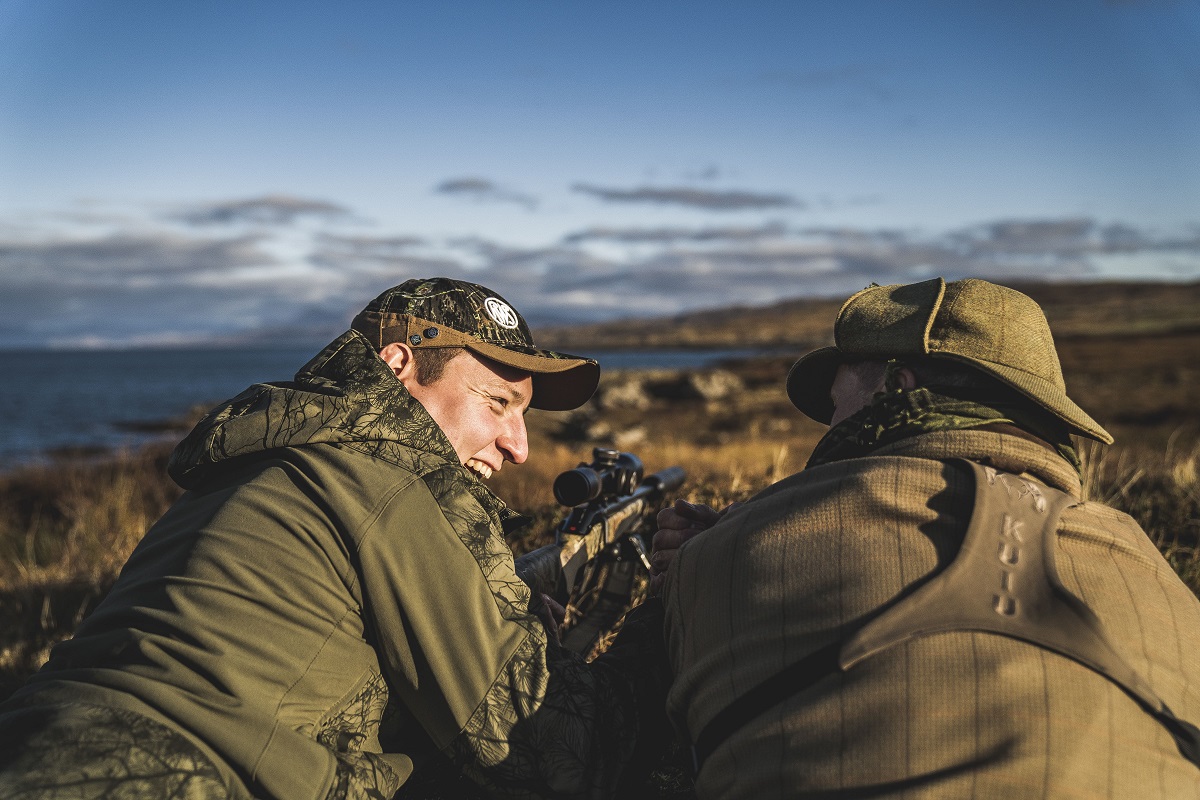
Total commitment during a doe hunt in Scotland…
Finally it looked like the time had come. We spotted a single adult with a calf at some distance. Both were on open ground near the coast. Now we had to reduce the distance between the deer and us without being noticed by the animals. An additional problem was the presence of another herd further up. This meant we had to seek cover from numerous wary eyes in order to get closer to the animals we were stalking. Niall knows the hunting grounds like the back of his hand, so we first retreated a few hundred metres in order to then get closer to the deer using a small hollow as cover. The wind was blowing constantly offshore, so there was a chance that Niall’s plan, which relied on the adult and its calf coming into view again behind a small hill, would work out. To avoid being spotted by the deer at the last minute, we covered the last few metres in the lowest stance, i.e. crawling on our bellies.
It worked! The distance was right, the adult and calf had stayed in position and hadn’t noticed us. We now followed the plan we had briefly discussed shortly beforehand: one to Niall’s left, the other to the right. Then we took a breather after the exertion of stalking and waited till the deer were in position for a shot. After a while the adult was the first to stand up. It gradually began to traverse the slope, heading away from our position. The adult then turned to the calf, which was a little further off to the right. The adult was standing broadside, although the calf wasn't in a suitable position yet. But then it too obliged us by immediately taking up a nice broadside stance. The shots went off – the calf didn’t know what hit it. The adult withstood the shot and remained broadside. The second shot was fired only a split second after the first one and the adult too went down after a clear impact reaction and three jerks.
After the hunt and the field dressing was completed the deer were retrieved, either in the conventional manner with sweat and muscle power or, where the terrain permitted, using small 8x8 Argocats. These little monsters can handle almost any terrain and work well here in the Scottish Highlands.
Back in our accommodation we met after a hot shower to share our hunting experiences with the others. Over a glass of good whisky by the fireplace, each of us recounted the experiences of the day with shining eyes and expansive gestures. What more could a natural born hunter desire?!
Conclusion on the RWS EVOLUTION GREEN Short Rifle after three days of hunting in Scotland
The groups came together again on each of the two following days to hunt in the different parts of the hunting ground. The landscape varied from rugged, rocky coastal stretches through small woods to high up in the highlands. By the end of the third day of the hunt most of the participants had bagged three does. Since we were the first to hunt here in Scotland with the new cartridge, there was plenty of interest in the collected experience of the other participants.
The split-second effectiveness of the new cartridge was really impressive, also over larger shot distances. Even the professional hunters, who were initially critical of the lead-free cartridge, were eventually won over by the effectiveness of the RWS EVOLUTION GREEN Short Rifle.
We left Scotland with memories of thrilling stalks and superb days of hunting that will remain with us forever, along with aching muscles which will hopefully be forgotten after a couple of days.
